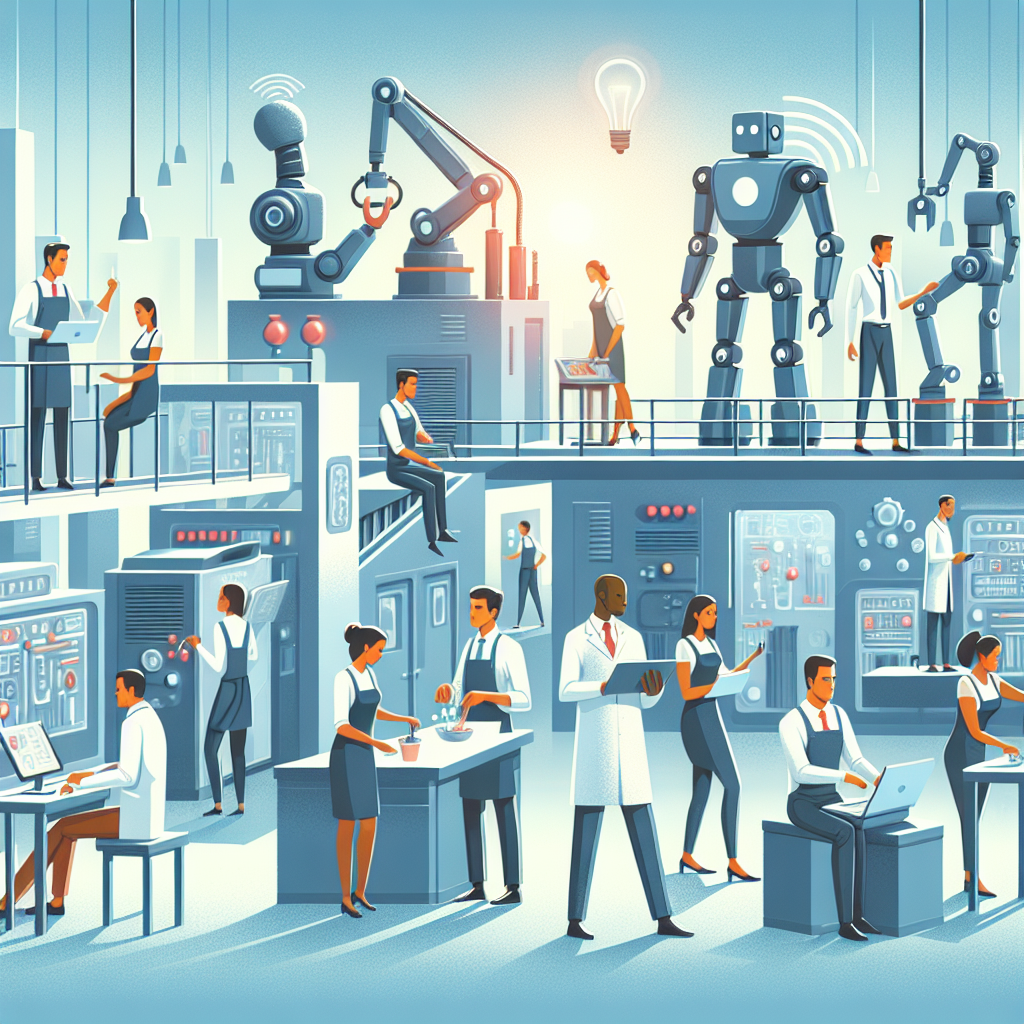The rapid advancement of automation is not just a technological trend but a transformative force reshaping the job landscape for 2025 and beyond. As industries adapt to these innovations, workers and businesses alike face unprecedented changes. Understanding how automation will influence work can help individuals prepare for new opportunities and challenges.
The Rise of Automation in the Workplace
Automation has evolved significantly from simple mechanical aids to sophisticated systems powered by artificial intelligence and robotics. This transformation is altering job roles and industry dynamics across the globe.
Technological Evolution Driving Automation
– Integration of AI and machine learning for smarter decision-making.
– Advanced robotics enabling precise and repetitive task execution.
– Internet of Things (IoT) connecting devices for seamless operations.
For example, manufacturing sectors now employ robots for assembly lines, improving efficiency and product consistency. Similarly, service industries use chatbots to handle routine customer inquiries, freeing human employees to address complex issues.
Impact on Job Roles and Skill Requirements
Human roles are transitioning from manual, repetitive tasks to those requiring creativity, strategic thinking, and interpersonal skills. Automation is not just replacing jobs but reshaping them.
– Increased demand for digital literacy and tech-savviness.
– Growing importance of analytical and problem-solving abilities.
– Shift toward roles in system management and maintenance.
Preparing the workforce through upskilling and continuous learning is essential to thrive in this changing environment.
Automation and Industry-Specific Transformations
Different sectors experience the integration of automation uniquely, influencing the nature of employment and operational strategies.
Manufacturing and Production
Automation streamlines production processes, boosting productivity and safety.
– Use of robotic arms for precision tasks.
– Automated quality inspection systems reducing defects.
– Predictive maintenance minimizing downtime.
This leads to leaner operations but requires workers to manage and optimize these automated systems.
Healthcare Innovations Through Automation
Automation enhances patient care and administrative efficiency.
– AI-driven diagnostics providing faster and accurate results.
– Robotic surgery enabling minimally invasive procedures.
– Automated patient record management speeding up workflows.
Healthcare professionals must adapt by collaborating with technology and focusing on empathetic patient interaction.
Financial Services and Automation
Banks and financial institutions are increasingly automated.
– Algorithmic trading optimizing investment portfolios.
– Automated fraud detection increasing security.
– Virtual assistants improving customer service response times.
Employees benefit from focusing on advisory roles and complex problem-solving rather than routine transactions.
Addressing Challenges in an Automated Future
While automation offers tremendous benefits, it also brings challenges that must be managed thoughtfully.
Job Displacement and Transition Support
Automation may displace certain job categories, necessitating robust support systems.
– Government and corporate retraining programs.
– Career counseling and transition services.
– Encouraging adaptability and lifelong learning mindsets.
These measures can mitigate unemployment risks and smooth transitions to new roles.
Ethical Considerations and Workforce Inclusion
Automation raises ethical questions regarding data privacy, decision transparency, and equitable access.
– Ensuring AI decisions are unbiased and explainable.
– Maintaining human oversight in critical operations.
– Promoting diversity in technology development teams.
Balancing automation benefits with ethical responsibility fosters trust and sustainable growth.
Strategic Approaches to Embrace Automation
Businesses that proactively integrate automation stand to gain competitive advantages.
Investing in Human-Automation Collaboration
Maximizing the synergy between humans and machines is key.
– Designing workflows that complement human creativity with machine efficiency.
– Training employees to collaborate with automated systems.
– Encouraging innovation through cross-functional teams.
Companies like Siemens have demonstrated success by blending automation with human expertise to improve productivity.
Adapting Organizational Culture and Structure
Agility and continuous improvement become vital qualities.
– Creating flexible job roles supporting evolving technologies.
– Emphasizing open communication and feedback loops.
– Leveraging data analytics for informed decision-making.
Such cultural adaptations enable organizations to thrive amidst rapid technological change.
The Path Forward: Preparing for Automation in 2025
Individuals and organizations must embrace automation as an opportunity rather than a threat. Continuous skill development and strategic planning will define success in this new era.
Key Actions to Take Now
– Acquire foundational knowledge in emerging technologies.
– Engage in lifelong learning programs and certifications.
– Partner with organizations offering automation solutions.
Educational platforms and training providers can be valuable resources for staying ahead.
Seeing automation as a catalyst for growth can unlock new career paths and business possibilities, ensuring resilience and innovation in 2025 and beyond.
Ready to navigate the future shaped by automation? Discover tailored automation strategies and expert guidance to transform your workplace at https://automatizacionesaiscend.com. Take the first step toward revolutionizing your job landscape today.



